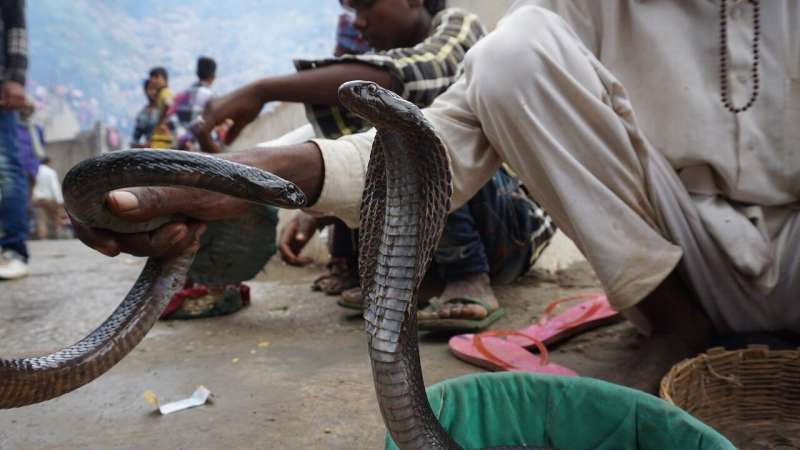Credit: Pixabay/CC0 Public Domain
New Curtin University-led research has found that people living in rural and urban areas across Western Australia need to be educated about how to identify the different types of venomous and non-venomous reptiles in WA, with only 58 percent of survey participants being able to correctly identify different species.
The research, published in the journal Human Dimensions of Wildlife, analyzed which snake species were most commonly involved in human incidents requiring a snake being removed from a property across WA and how many people could correctly identify a dangerous species.
Lead researcher Dr. Ashleigh Wolfe, who conducted the research as part of her Ph.D. in the School of Molecular and Life Sciences at Curtin University, said that despite the high number of venomous snakes in WA, there is little knowledge or understanding of which reptiles are deadly and how to best manage a snakebite if someone is bitten.
"Western Australia has more than 600 species of reptiles, of which 14 percent are venomous, so misidentification may be a fatal mistake for either the person or the snake. Snakes bites in Australia average 1,000 to 3,000 cases per year, with 58 related deaths in the last 40 years across the nation and 16 in WA," Dr. Wolfe said.
"We conducted a survey testing the public's ability to correctly name and identify common Australian venomous and non-venomous reptiles including the venomous brown snake (dugite) and tiger snake, and the non-venomous South-West carpet python, which we repeated across four different community events including Curtin University's Open Day. The team also assessed more than 9,000 calls to the Wildcare Helpline in WA by the public who were seeking help with a 'problem' snake. Our research found that 58 percent of participants were able to correctly identify three common reptile species found in WA. We also found that adults were better at identifying venomous snakes, especially the most common species the dugite, compared to children."
The study indicates that the public's inability to identify different snake species may contribute to an increase in the number of snake bites. It also highlights the importance of people being fully informed about the different snake species, where they live, their different markings, and who to call if a snake needs to be removed.
Co-author and Ph.D. Supervisor Associate Professor Bill Bateman, also from Curtin's School of Molecular and Life Sciences, said further education was needed to ensure the general public, especially children, were taught about the different reptile species which could be life threatening.
"Previous research has found that people in Eastern Australia were 20 times more likely to approach a snake, and 100 times more likely to attack a snake, which contributes to snake bites, so educating the general public about the dangers of snakes could be lifesaving for both the human and the snake," Associate Professor Bateman said.
"We recommend developing educational resources that can help people understand the danger of interacting with reptiles. Ideally, talking about how to identify and safely respond to a dangerous snake should be a standard part of the current educational curriculum. Creating brochures that are widely distributed in parklands, bush locations or at beaches could help people identify the difference between a dugite, tiger snake and common lizard species, who are commonly misidentified by the public, and give them a better understanding of the local environment and which reptiles may reside there."
The research was co-authored by Patricia Fleming from Murdoch University.
More information: Ashleigh K. Wolfe et al. What snake is that? Common Australian snake species are frequently misidentified or unidentified, Human Dimensions of Wildlife (2020). DOI: 10.1080/10871209.2020.1769778
Provided by Curtin University























